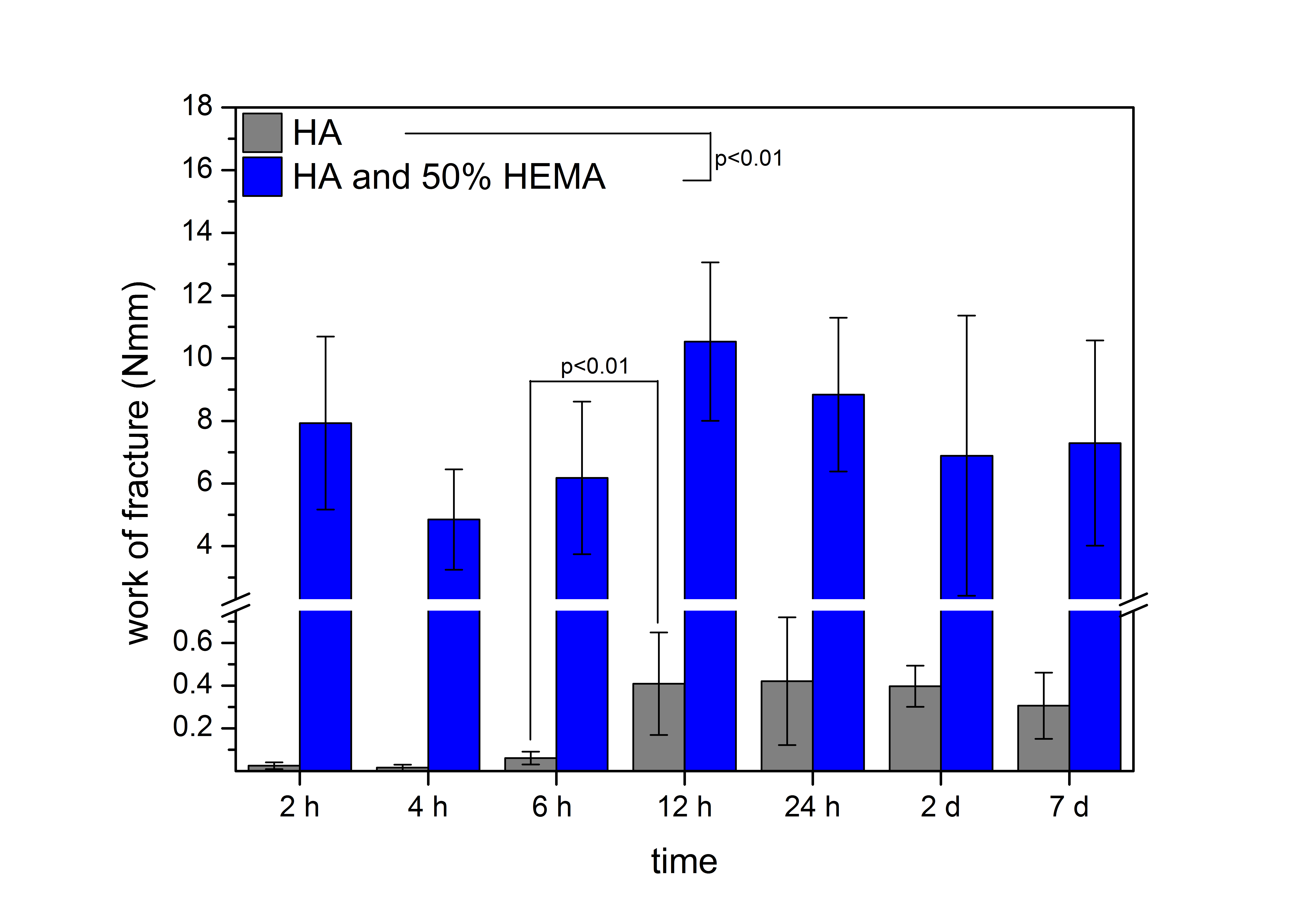Introduction: Self-setting and osteoconductive calcium phosphate cements (CPC) are widely used in clinics, but their application is limited to non-load bearing defects [1] as they are brittle with low fracture toughness and bending strength. For an improvement of their mechanical properties, hydrogel forming water soluble monomers were added in this study into the liquid phase of the cement paste. Upon mixing the CPC powder with the monomer solution, cement setting and hydrogel formation simultaneously occur so that a dual setting, interpenetrating network of organic and inorganic components is formed. Here, we analysed the influence of 2-hydroxyethylmethacrylate (HEMA) on a ceramic matrix of calcium deficient hydroxyapatite (HA) [2], with a special focus on both mechanical properties as well as detailed time-dependent studies about precipitation and hydration of HA in the poly-HEMA gel.
Materials and Methods: α-Ca3(PO4)2 was either mixed with a 2.5 wt% Na2HPO4 solution or with modified liquid phase containing 50 % HEMA. Both variations were prepared in a powder-to-liquid-ratio of 3.0 g/mL. Hydrogel formation was initiated via an ammoniumpersulfate/ tetramethylethylendiamine system. The cement paste was transferred into silicon molds (3x4x45 mm), demolded after 1 h and stored underwater at 37 °C. Relevant mechanical properties were determined in a time dependent manner up to 7 d and corresponding crystal sizes and conversion to HA was analyzed via quantitative in situ XRD calculations according to literature [3].
Results: Cements without HEMA showed an increase in bending strength from 0.7±0.3 MPa after 2 h to 6.4±2.1 MPa after 7 d. The dual setting system showed similar tendencies but the initial bending strength even reached 2.8±0.7 to 9.9±2.7 MPa after 7 d. An increase in flexural modulus from 0.2±0.1 to 2.7±0.4 GPa was visible for reference probes whereas its development was less brittle for HEMA-cements and showed up to 1.0±0.2 GPa. Work of fracture was marginal for reference probes (up to 0.3±0.2 Nmm), but at least one order of magnitude higher for the dual setting system (Figure 1). The improved mechanical performance came along with a delayed setting reaction and minor HA crystal sizes.

Figure 1: Time-dependent work of fracture of reference and 50 % HEMA containing samples.
Discussion: The mechanical performance of HA forming CPC could be improved by the introduction of an interpenetrating organic network, at which the setting reaction of both components did not occur simultaneously. Initially, the formation of a poly-HEMA hydrogel with a certain mechanical performance was observed, followed by its successive mineralization with HA. So, HEMA containing probes reached certain strength earlier with simultaneously being less brittle but rather pseudoplastic.
Conclusion: Time-dependent experiments revealed the setting kinetics of HA/poly-HEMA composite and therefore its suitability for clinical application in load bearing defect sites, as peseudoplastic behavior and strongly increased work of fracture were obtained.
We gratefully acknowledge financial support by: DFG State Major Instrumentation Programme, funding the crossbeam scanning electron microscope Zeiss CB 340 (INST 105022/58-1 FUGG)
References:
[1] Bohner M., Injury. 31: D37-D47, 2000
[2] Christel T. et al., J. Mater. Sci.-Mater. Med. 24:573-581, 2013
[3] Hurle K. et al., Acta Biomater. 10:3931-3941, 2014